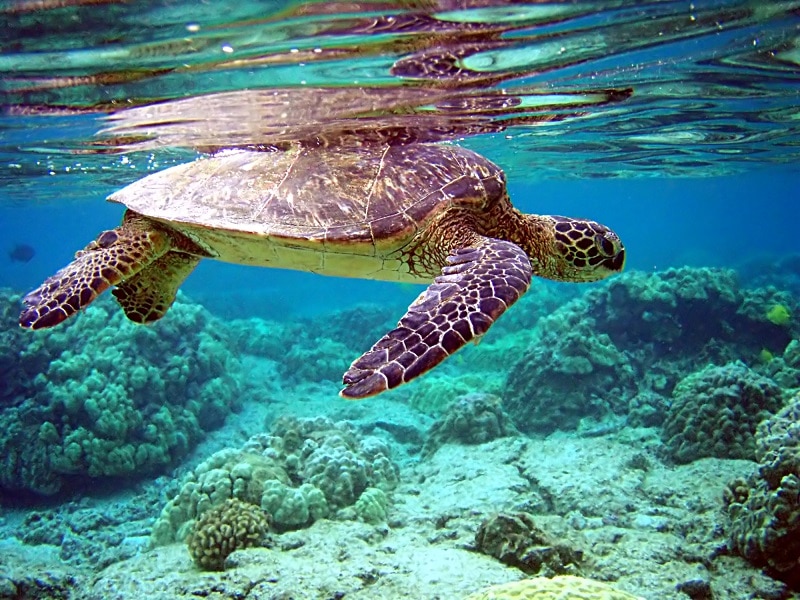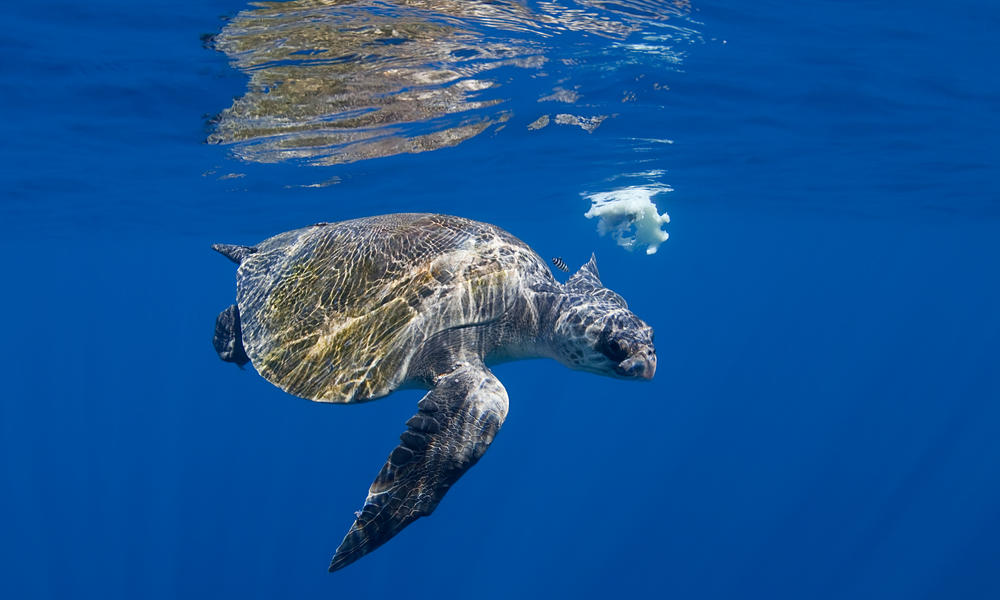Their smooth wide shells provide the perfect substrate for many other marine organisms to live on. Sadly in recent years a decline in the population has occurred as a consequence of overharvesting along the east coast of North America.
 Horseshoe Crab Blood The Miracle Vaccine Ingredient That S Saved Millions Of Lives Natural History Museum
Horseshoe Crab Blood The Miracle Vaccine Ingredient That S Saved Millions Of Lives Natural History Museum
Most horseshoe crabs will not even make it to the larval stage before being eaten.

How do horseshoe crabs save human lives every day. As a result all intravenous drugs shots and vaccines in the US are required by the FDA to be tested with horseshoe crab blood to detect any foreign bacteria. Horseshoe crab blood saves thousands of human lives every year and over 250000 crabs are harvested each year by scientists and 30 of their blood is removed. Their blood clots immediately when its exposed to dangerous bacteria.
You dont survive for 450 million years without learning a trick or two. For a long time the loss of a few thousand horseshoe crabs was viewed as a necessary price to pay for the huge medical benefits derived from their capture. Copper bonds with oxygen less efficiently than does iron but efficiently enough for the horseshoe crabs to have survived for more than 450.
Horseshoe crab blood contains a chemical that makes its blood clot in the presence of even the most minute trace of bacteria. As Care2s Jessica Ramos has explained horseshoe crabs have blood that contains Limulus Amebocyte Lysate LAL. In the case of horseshoe crabs one of those is developing blood with remarkable antibacterial properties.
Atlantic horseshoe crabs spawning in the shallow sandy waters of the Delaware Bay. When the crabs blue blood is exposed to human blood it reveals any bacteria that might otherwise go undetected. In other words horseshoe crabs are essential to guaranteeing millions of lives are saved through vaccination.
If you have ever had an injection it will have been tested to make sure it is free from potentially deadly endotoxins. The larva looks like a tiny version of an adult horseshoe crab but without a tail. Also instead of using white blood cells to fight infection they use amebocytes and the Atlantic horseshoe crab has evolved to the point where their amebocytes of great value to the medical community.
The biomedical industry bleeds horseshoe crabs routinely in order to make sure their products wont poison patients. Because of this one-of-a-kind ability the blood of these animals currently. Also your medical implant has been.
Blood cells taken from horseshoe crabs are used to make Limulus amebocyte lysate LAL a substance that produces an instantaneous and clearly visible reaction to contaminants. The horseshoe crab is quickly sealed back up and ready to go. This article is more than 2 years old.
Horseshoe crabs deposit their eggs by the thousands along. While this portion of blood is meant to be an amount the crabs can survive it is thought that 10-30 dont. They are also the food of fish and invertebrates that also take advantage of their larvae.
Horseshoe crab blood is bright blue due to copper-based hemocyanin it uses to transport oxygen instead of the hemoglobin that makes our blood red. This crab could save your life - if humans dont wipe it out first. Larval horseshoe crabs travel into the ocean water and settle on.
Horseshoe crabs not only contribute their blood for the benefit of human beings but they are also the food of some species of birds that eat their eggs because of the amount of fat they provide. However at 15000l plenty of people still think the crab blood is worth bottling. As it moves along the oceans bottom a horseshoe crab may be carrying mussels barnacles tube worms sea lettuce sponges and even oysters.
So biomedical companies use the crab. If the egg survives the larval horseshoe crab will hatch from the egg after about two weeks or more. Without LAL anyone receiving an injection medical.
To prevent a potentially lethal infection certain blood cells carry compounds that cause the blood to clot up when exposed to bacteria fragments. Given how valuable horseshoe crab blood is to laboratories animal activists have started a petition asking medical companies that borrow horseshoe crabs to care more about the crabs wellbeing. Moreover among the females that do recover they often breed less after being bled.
When a horseshoe crab is cut the wound is immediately slathered in bacteria from its murky surroundings. Horseshoe crabs or to be more precise their incredible baby blue blood are used to test for bacterial contamination thus saving countless lives each year during medical procedures. Scientists have discovered that this magic LAL is especially useful.
With hemocyanin the copper bonds with the oxygen. In order to sustain the species the harvesters take 30 of the blood from each crab after which they are returned to the ocean. The test uses a rare substance only found in the milky blue blood of these prehistoric athropods.
In addition to their value in medical research horseshoe crabs fill important ecological roles. Horseshoe crab blood is used every year to meet this requirement although with the immediate need for such a large sum of vaccines to combat the new coronavirus there is a much higher demand for the liquid. There it is our horseshoe crab wallowing in a muddy pit fighting.
Horseshoe crab eggs are a food source for numerous birds reptiles and fish. A horseshoe crab has probably saved your life. That includes your flu shot your dogs rabies shot and your Covid vaccine.
Thats good news for people all over the world since nearly every person and pet on the planet has been aided by horseshoe crabs because their blood is.
In the wild American box turtles Terrapene carolina regularly live more than 30 years. How Long Do Green Sea Turtles Live.
 10 Oldest Sea Turtles In The World Oldest Org
10 Oldest Sea Turtles In The World Oldest Org
Youre right turtles and tortoises live a lot longer than most other animals.

Which sea turtle lives the longest. This post has been brought you by laroja-deportesonline. The name however doesnt come from the colour of their. Sea turtles appeared on earth more than 200 million years ago it is the famous living fossil According to the record of Guinness Book of World Records it has the longest lifespan of up to 152 years.
A Tough Shell The smallest sea turtles are about the size of dinner plates while the largest the leatherbacks can reach sizes similar to a golf cart. A A-Email Print. But turtles are definitely an exception and one of them was.
Most marine turtles take decades to maturebetween 20 and 30 yearsand remain actively reproductive for another 10 years. Archelon a giant sea turtle that lived roughly 80 to 66 million years ago during the Cretaceous Period grew to sizes roughly 13 feet in length. From 5cm at birth to 15m fully grown green sea turtles are the second largest of the sea turtles behind leatherback turtles.
It is a known fact that humans survive most animals. Fish Mammals Sea Life. Leatherback turtles also have a longer lifespan compared to other turtles and can live up to 100 years.
The actual documentation of the age of any species of sea turtle is difficult. How Long Can Turtles Live. It is not known exactly how long sea turtles live in the wild but scientists think their life span may be as long as a century.
It is worthy of the old god of longevity in animals. One giant Galápagos tortoise named Harriet even lived to be more than 170 years old said my friend Donna Holmes. The largest and oldest known sea turtle species is the leatherback turtle which is believed to have existed for more than 150 million years.
A few are known to have lived for over two hundred years. The Sea Turtle Life Cycle. Of the seven species of sea turtles on the globe the hawksbill has the shortest lifespan at 30 to 50 years and the green turtle has the longest at 80 years or more.
For more information about the challenges they face see our pages about threats to sea turtles. The green sea turtle is also known around the world as the green turtle the black sea turtle or the Pacific green turtle. Obviously sea turtles requiring 40 to 50 years to mature will have life spans reaching at least 60 to 70 years.
If you were a turtle you might live for more than 150 years. However mortality in sea turtle barnacles is often driven by their host shedding the scutes on which the barnacle is attached rather than the death of the sea turtle itself. The smallest of the species are terrapins and box turtles and their average life-span is 30-40 years.
What we do know is that sea turtles live a long time some can live up to 50 years or more and have similar lifespans to humans. The largest and smallest sea turtlesthe leatherback and the kemps ridley respectivelyboth have an average lifespan of 45 to 50 years. Green sea turtles Live to over 80 years in the wild.
Com The BEST online site to watch live soccer matches The turtle named Jonathan was born in 1832 and is now 187 years old it is currently the oldest living animal. Unfortunately though turtles face a multitude of threats related to human activities. Larger turtles usually sea turtles live approximately up to 80 years while the largest species the giant tortoise has an average age of one hundred years.
Sea turtles tend to live long lives greater than 70 years so barnacles do not have to worry about host death.